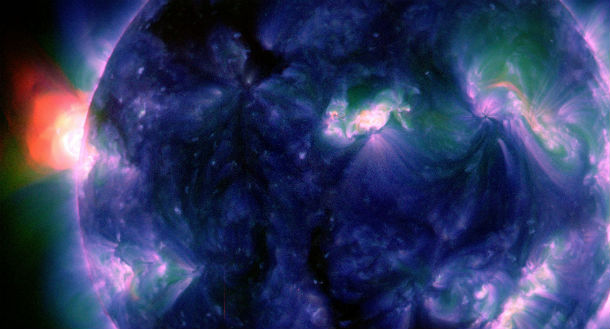Old Sunspot 1731 erupted with M1.7 solar flare – May 20, 2013

A moderate solar flare peaking at M1.7 was observed off the east limb around >Returning Sunspot 1731 located off the east limb produced moderate M1.7 solar flare at 05:25 UTC on May 20, 2013. Sunspot 1731 will begin to rotate back into view within the next 24 hours when it will get new sunspot number.
.png)
Space weather forecasters predicted geomagnetic storming conditions up to major G2 level, however, the Bz component of the interplanetary magnetic field (IMF) has been mostly pointed north, meaning that geomagnetic activity is being suppressed. Geomagnetic conditions are in normal background for now.
The geomagnetic field is expected to be at quiet to major storm levels during May 20, quiet to unsettled levels on May 21 and quiet to active levels on May 22, 2013. The 10 MeV proton flux has descended below the threshold of 10 protons/cm2-s-sr, for the first time since May 15, 2013. Protons have a chance of crossing threshold again in the next three days. Solar activity is likely to be moderate with a chance for X-class flares over the next three days. NOAA/SWPC forecasters estimate 65% chance of M-class and 25% chance of X-class solar flares in the next 24 hours.
The largest solar event for the past 24 hours was a C9.9 solar flare observed at 17:50 UTC on May 19, 2013. The source of this event was old Sunspot 1731 which is still hiding behind eastern limb, but will reach visible disk in the next 24 hours. There are currently 6 numbered sunspot regions on the disk. Recently very active Sunspot 1748 continues to slowly decay. All other regions are stable.
Featured image: SDO's combined AIA

What's the relationship between solar flares and volcano's here on earth?
Hi Tim. As I know it, there is no direct link between solar activity and volcanic eruptions here on Earth. However, there is no detailed research about the subject, so it is possible, but is beyond our understanding of today's space weather, geology, volcanology and seismology.